SHRIMP

Photo Credit : Marty Snyderman
Shrimp is a member of the phylum Arthropoda, class Crustacea, which is one of the three main groupings of arthropods (the other two being Arachnida and Insecta). The name crustacean comes from the Latin word "crusta," meaning "crust," and refers to the hard outer shell that this class of invertebrates wears. There are about 40,000 species of crustaceans, including well-known animals such as shrimp, lobsters, crayfish, and crabs, as well as barnacles, water lice, and isopods like woodlice. Some are predators and feed on other invertebrates, while others are herbivores and feed only on plant matter.
Shrimps are also known as prawns and crayfish; even this name is also used to refer to some members of the Stomatopoda, such as the mantis shrimp, which have similar body shapes.
There is a difference between prawns and shrimp. Prawns are crustaceans of the suborder Dendrobranchiata, while shrimp belong to the suborder Pleocyemata. Another difference is that prawns have branched gills and release fertilized eggs into the water. Shrimp have flat gills and carry the fertilized eggs under the abdomen until they hatch.
Crustaceans are invertebrates (animals without a backbone) with several pairs of articulated legs and two pairs of antennae. They are covered by a strong exoskeleton, which acts as an outer support structure with overlapping plates that thin at the joints to allow maximum movement. Their bodies are divided into two main regions that fuse together. Most crustaceans live in water, whether it be fresh, brackish, or salty.
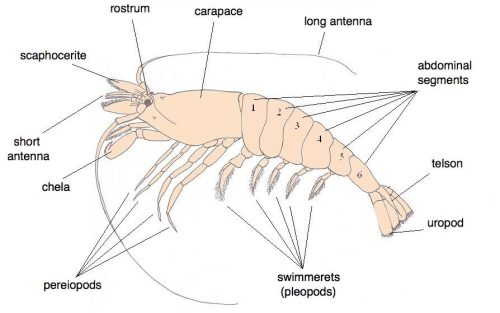
Shrimp external anatomy (Photo Credit : Atlas Meigoo)
Most crustaceans have paired appendages (such as legs, arms, or claws). To be classified as a crustacean, an animal must have two body parts that join as a cephalothorax (head and middle region) and an abdomen (lower part of the body). The head has two compound eyes located at the end of retractable and flexible stalks. The compound eye is made up of many separate compartments, each with its own lens. Crustaceans also have two pairs of antennae with which they sense and receive chemical stimuli. They should also have at least four pairs of walking legs, often more. Shrimp, lobsters, crabs, and crayfish are called decapods because they have ten legs. All have a wide tail like a paddle, used for swimming.
Crustaceans are named for their hard exoskeleton, familiar to anyone who eats lobster or crab. The exoskeleton is derived from chitin and calcium carbonate. For example, the edible blue crab has calcium carbonate equivalent to four lime sticks. For growth, the exoskeleton is periodically shed in the molting phase. Some crustaceans can mate only for a short time after they molt when the new exoskeleton is still soft. This is also a time of great vulnerability to predators, so crustaceans often seek a place to hide before molting.
More than 30,000 species have been identified, most of which live in the sea. Land species such as woodlice and pill bugs are believed to have evolved from marine species. Most crustaceans live freely, but some species are parasitic—some even on other crustaceans. Some species swim freely, while others specialize in crawling or burrowing in soft sediments.
From a taxonomic perspective, the name shrimp actually covers several different groups of animals, though they are still close relatives. For example, mantis shrimp and mysid shrimp both belong to the class Malacostraca, like true shrimp, but come from different orders, namely Stomatopoda and Mysidacea. Triops longicaudatus and Triops cancriformis are also popular animals in freshwater and are often called shrimp, although they are native to Notostraca, a group unrelated to decapods.
Shrimp are animals that live in waters, specifically rivers, seas, or lakes. Shrimp can be found in almost all large bodies of water, including freshwater, brackish water, and salt water, at varying depths, from near the surface to several thousand meters below.
Copepod species and small shrimp feed by filtering plankton. Food particles are collected in a special filter and then transferred to the mouth. Larger species, such as crabs and lobsters, are active hunters of small fish and other organisms, while some species adopt the role of eating the remains of dead animals, plants, and other waste materials.
The reproductive system of crustaceans varies. Most species are dioecious (having separate male and female individuals), but some, such as barnacles, are hermaphrodites. Fertilization is usually internal through direct copulation. The fertilized eggs then mature either in a special brood chamber in some part of the female's body or are attached directly to some external appendages, such as claws. Most aquatic species hatch into free-swimming larvae that develop through a series of molts until they reach adult size.
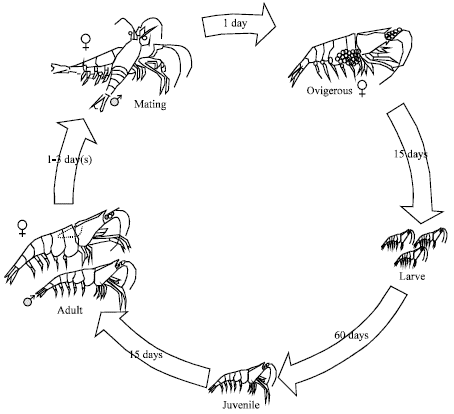
Life cycle of shrimp (Photo Credit : F.A.H. Nur and A. Christianus)
Some crustaceans resemble adult miniatures from the moment they hatch, but many species have larval shapes with little or no resemblance to adults. These larvae, and some adult crustaceans, such as krill and copepods, are very important members of freshwater and oceanic plankton communities and are a major food source for corals, fish, baleen whales, and other animals. Some crustaceans turn the tide on these predators by parasitizing fish skin. These parasitic crustaceans are often worm-like and are hardly recognizable as relatives of shrimp and crabs.
There are about 7,500 species of copepods, some of which are no more than a few millimeters long. These free-swimming herbivores play an important role in the diet of many fish.
Some species of the class Crustacea are popular because of their economic value for consumption and as ornamental fauna (in aquascaping). Some of these species are:
- Rebon Shrimp (Mysys, Acetes, Crago)
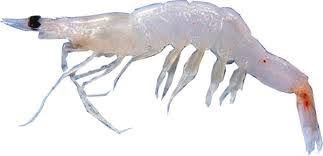
Acetes sp. (Photo Credit : Krishi icar)
- Fan shrimp/sand shrimp (Thenus orientalis)
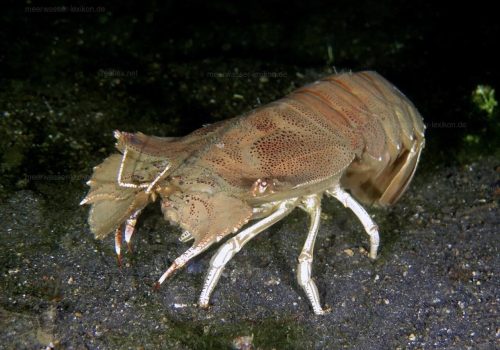
Thenus orientalis (Photo Credit : Michael Eisenbart)
- Ronggeng shrimp (Harpiosquilla raphidae)
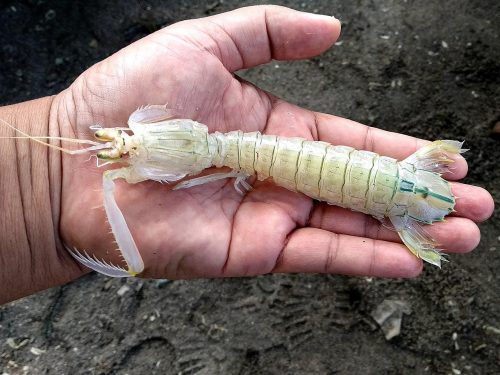
Harpiosquilla raphidae (Photo Credit : Wibowo Djatmiko)
- Crayfish/Lobster (Panulirus versicolor)
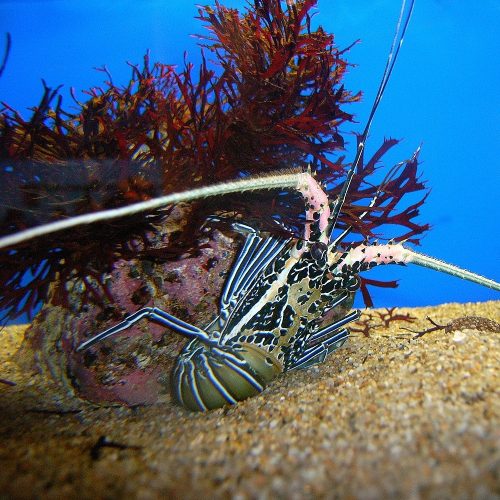
Panulirus versicolor (Photo Credit : OpenCage)
- Giant Shrimp (Macrobrachium rosenbergii)
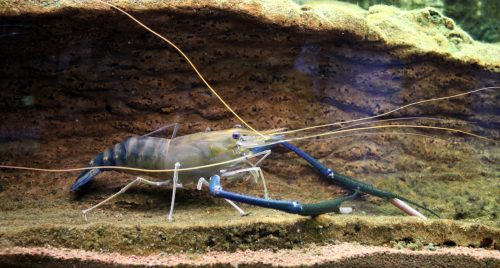
Macrobrachium rosenbergii (Photo Credit : Citron)
- Windu/Pacet shrimp (Penaeus monodon)
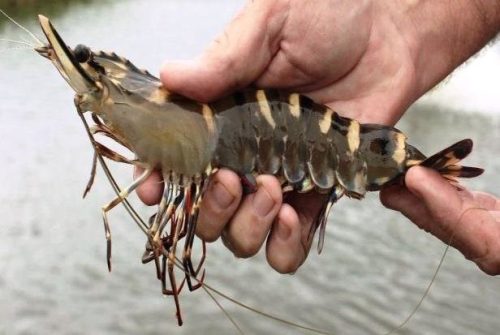
Penaeus monodon (Photo Credit : Abhijin Mitra
- Vannamei shrimp (Littopenaues vannamae)
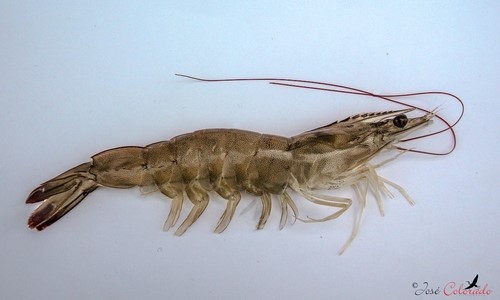
Littopenaues vannamae (Photo Credit : Jose Colorado)
- Cherry shrimp (Neocaridina heteropoda)
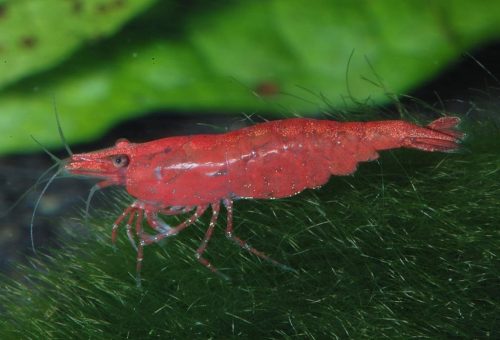
Neocaridina heteropoda (Photo Credit : DirkBlankenhaus)
- Bee shrimp (Caridina cantonensis)
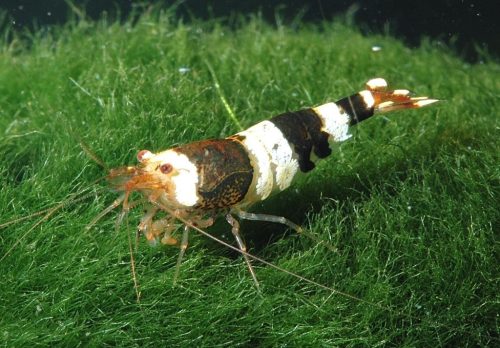
Caridina cantonensis (Photo Credit : DirkBlankenhaus)
- Sulawesi shrimp (Caridina dennerli)
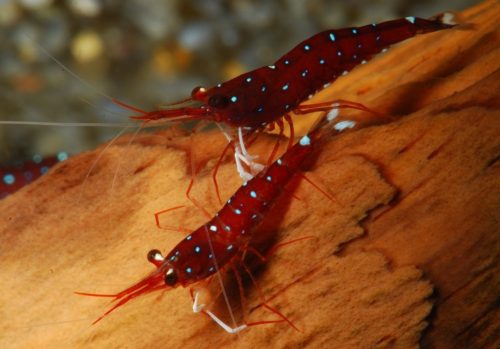
Caridina dennerli (Photo Credit : DirkBlankenhaus)
-YN

